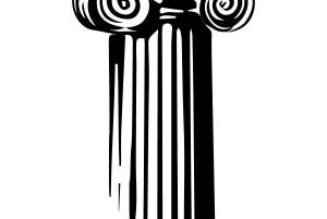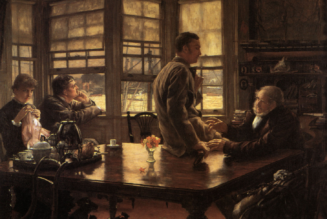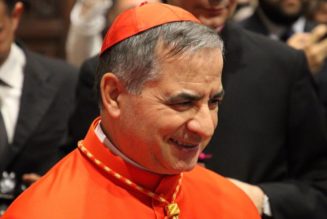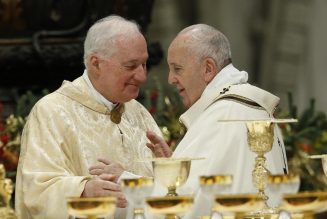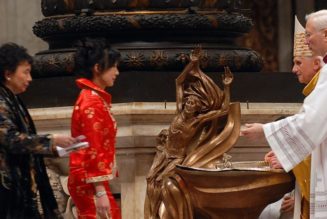
The inevitable clergy sexual-abuse report from the Archdiocese of Baltimore is a major news story, for legions of valid reasons.
Baltimore is this nation’s “premier see,” the oldest diocese in the United States. This city at the heart of a once-thriving Catholic region that now in a demographic death-dive that is extreme, even by the standards of 21st century America.
To move closer to issues discussed in this week’s “Crossroads” podcast (click here to tune that in), we are also talking about the city and Catholic culture in which the Sister Catherine Cesnik vanished in November of 1969. This is the murdered nun who left behind friends, colleagues and former female students who were convinced that she was about to blow the whistle on serial abuser Father Joseph Maskell, one of the villains at the heart of the famous Netflix who-done-it “The Keepers.”
Yes, the former chaplain at the famous (now closed) Archbishop Seton Keough High School was mentioned 200 times in the 450-page Maryland Attorney General report on child sexual abuse by clergy (and others) in the Archdiocese of Baltimore.
But here is the key point that I want to make — as part of a broader discussion of the hellish, I would argue demonic, sexual-abuse sins and crimes being committed against children, teens and adults in many different secular and religious institutions. Most journalists see this abuse crisis through a specific lens, and it’s a narrow Catholic lens with events beginning with the The Boston Globe and it’s pivotal Spotlight investigations that went public in 2002.
But, as “The Keepers” series on Netflix makes clear, Father Maskell had already abused children in Baltimore, abuse that was reported to superiors, before he was transferred over to Keough.
Note that this was long before Father Gilbert Gauthe was assigned to St. John the Evangelist Catholic Church in Henry, La., where he began abusing young boys — creating a landmark 1984 case that opened the modern era of media coverage of clergy sexual abuse in America. That media coverage took place early in my own journalism career and I’ve been covering this story ever since.
The whole point of this week’s podcast is that journalists need to think all this over. Do we want to keep painting the sexual abuse of children, teens and adults as a “Catholic” story that began a decade or two ago, or do we want to broaden the lens and look at the bigger picture — which would be an even bigger, more important and, yes, more difficult story?
Let me stress that I think Catholic clergy who abuse children, teens and adults deserve all the punishment that their superiors and civic authorities can send their way. Defrock them and lock them up. Yes, I also think the Roman Catholic hierarchy needs to find some way to apply its new tougher standards to bishops and cardinals guilty of abuse or of covering up abuse.
But I think journalists need to think more time about the abuse being committed by public school teachers, Protestant young pastors, coaches for secular sports, religious and secular counselors and many, many, many other people with unique access to the bodies and souls of children, teens and vulnerable adults.
Maybe, when covering stories about Catholic sexual abuse — yes, keep covering them — journalists could at least MENTION the bigger picture? And, maybe, when writing laws to fight sexual abuse our legislators could write bills that strive to punish secular abusers with the same standards aimed at Catholic clergy and other religious leaders?
That’s part of this Baltimore story, too.
So what about the mainstream-media coverage of this new view into sexual-abuse hell? Here is a fine summary statement from The Pillar:
The incontrovertible history uncovered by this investigation is one of pervasive and persistent abuse by priests and other Archdiocese personnel,” the Maryland AG’s report explained. “It is also a history of repeated dismissal or cover up of that abuse by the Catholic Church hierarchy. While every victim’s story is unique, together they reveal themes and behaviors typical of adults who sexually abuse children, and of those who enable abuse by concealing it. What was consistent throughout was the absolute authority and power these abusive priests and church leadership held over victims, their families, and their communities.”
Indeed, the report documents allegations of more than 600 victims of abuse in the archdiocese over the course of decades, allegedly harmed by some 150 clerics and religious. It also details mishandling and cover-up that has become well-documented in other places — moving clerics to new assignments after allegations, relying on psychological assessments rather than state and canonical criminal proceedings.
The report explains that abusers often spiritualized their sexual abuse, and targeted children who were especially faithful, or “who were especially isolated or vulnerable because of shyness, lack of confidence, or problems at home.” …
But the Baltimore report itself acknowledged a point that is worth considering: By 2023, “most of the abusers and those who concealed their wrongdoing are dead and no longer subject to prosecution.”
Note that final point. It’s clear that reform efforts by Catholic leaders have had a positive impact. At the same time, it’s clear that there are topics that Catholic bishops are still avoiding.
As the New York Times noted, in its report on the Baltimore document:
David Lorenz, director of the Maryland chapter of SNAP, an advocacy group for clergy abuse victims, lamented some of the redactions in the report, including a significant block of text documenting “senior members of the archdiocese” involved in handling child abuse claims who failed to investigate, report or remove offenders’ access to children.
That same story raised another important issue, at the level of state politics.
… The report landed just weeks after the Maryland Senate overwhelmingly voted to pass legislation repealing the statute of limitations on sexual abuse lawsuits. The law would allow victims to file civil lawsuits no matter how long ago their abuse happened.
The House has already passed a version of the same bill, and Gov. Wes Moore has said that he looks forward to signing it into law.
The state’s Catholic Conference, the lobbying arm for the church, has opposed the bill, calling it unconstitutional and unfair.
Ah, but here is another important point journalists need to consider, and include in their reports.
Why did the Maryland Catholic Conference oppose this bill — especially in light of the fact that, in 2022, Catholic leaders ENDORSED the creation of state legislation that “prospectively eliminates the statute of limitation in civil lawsuits involving cases of child sexual abuse.”
Wait, why didn’t the Times mention that? Perhaps it was because of a poison pill addition to the legislation that — once again — showed that “reformers” seem to think that some sexual abusers are worse than others? Here is a passage from the local Catholic media:
Calling it “unconstitutional” and “unfair,” the Maryland Catholic Conference expressed its continued opposition to legislation approved March 10 by a State Senate committee that would treat private institutions such as the Catholic Church differently from public institutions in civil liabilities faced for child sexual abuse. …
The legislation “creates blatant disparity in its treatment of victims, with much lower monetary judgements available to victims of abuse in public institutions than those of abuse in private settings,” the Catholic Conference said.
The legislation caps judgements for private institutions at $1.5 million, while capping judgements against public institutions at only $890,000.
In an interview with the Catholic Review, Sen. Chris West, a Republican who represents Baltimore and Carroll counties and was the only member of the Senate committee to vote against the bill, said the disparity is fundamentally unfair.
He gave the example of two hypothetical 11-year-old girls who each suffered identical abuse cases, one at a Catholic school and the other from a public school on the opposite side of the street.
“The idea that one child, now much older, could file a lawsuit against the Catholic Church for a million and a half dollars, and that the other girl, now also much older, could only file suit against the former city school system for $890,000 sounds to me to be unequal treatment, unfair treatment and unacceptable treatment,” West said.
Why, to cite one obvious example, treat Catholic school crimes worse than those in public schools?
Thing about this in journalism terms — which means thinking about politics. Why avoid public schools and other gigantic mounds of dollars linked to civic institutions? Maybe it has something to do with the stunning level of clout that public school teachers have in the mechanics of Democratic Party life?
That would make sense.
In terms of news-ink potential, how big would this story be? Here is a recent conservative take on that, care of The City Journal, published by the Manhattan Institute:
The New York Times … accused conservatives of having a “freakout” about imaginary “grooming” in public schools, and the Washington Post dismissed concerns about sexual abuse by teachers as a “QAnon conspiracy.”
But whatever the editorialists at the Times and the Post might say, the facts reveal that too many American public schools have been hunting grounds for sexual predators. Parents fearful about abuse in schools are not falling victim to a “moral panic” or “QAnon messaging”; they are using their intuition to assess a real danger to their children. The most comprehensive report about sexual abuse in public schools, published by the Department of Education in 2004, estimates — on the basis of a 2000 survey, conducted by the American Association of University Women, of 2,065 students in grades eight through 11 — that nearly 10 percent of K-12 students have been victims of sexual misconduct by a public school employee. Assuming that figure is accurate, this would translate into an approximately 4.5 million children nationwide suffering sexual misconduct by public school employees, with an estimated 3 million suffering physical sexual abuse — a number, according to the author of the study, Hofstra University professor Charol Shakeshaft, more than 100 times greater than the physical abuse committed by Catholic priests. …
Despite these numbers, the story vanished. A few media outlets covered the report and interviewed Professor Shakeshaft, but no national outcry followed.
Once again, I realize that there are moral and ethical issues linked to Catholic and other religious sexual-abuse cases that are especially harrowing. Everyone understands that. I am asking for a broader, fiercer journalism approach to the sexual-abuse of children, teens and vulnerable adults — not some kind of slacking on coverage of Catholic crimes.
I also know that Baltimore plays a symbolic role in all of this.
As the conservative scholar and investigator Leon Podles noted in his searing and indispensable book “Sacrilege” (reporters need this in their libraries, if only for the hundreds of footnotes):
The [abused] boys were all taught in Catholic schools. An important text for religious education was the Baltimore Catechism, in which an illustration entitled “The Priest on Earth Another Christ” explained that “Catholics should show reverence and honor to the priest because he is the representative of Christ himself and the dispenser of His mysteries. … One victim explained … “I was trained that the priest was the equivalent of God of Christ on earth and that they should be obeyed.”
That’s all for now.
Please dig into this podcast — carefully. This story is, alas, not going way and it’s a bigger story than many journalists think that it is. Pass this podcast along to others, please.

